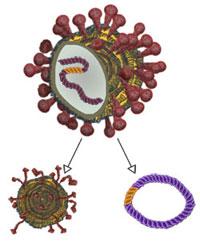SARS virus (severe acute respiratory syndrome)

What is SARS virus (severe acute respiratory syndrome) and Definition
SARS virus is a life-threatening illness resulting from INFECTION with the VIRUS SARS-associated coronavirus (SARS-CoV). The first outbreak of SARS occurred in 2003 and sickened more than 8,000 people in Asia, Europe, and South America. The handful of people infected in the United States acquired SARS during travel to countries experiencing outbreaks.
Symptoms of SARS virus
Infection occurs through close contact; SARSCoV spreads through airborne droplets as well as direct touch with saliva and other bodily secretions that shed the virus. Symptoms appear 2 to 10 days after infection and begin with HEADACHE, general MUSCLE aches and JOINT PAIN, sore THROAT, and moderate FEVER. Within a few days shortness of breath (DYSPNEA) develops and may result in HYPOXIA (insufficient oxygen entering the BLOOD circulation for distribution to organs and tissues. Blood tests confirm the presence of SARS-CoV.
Treatment SARS virus
Treatment is primarily supportive; ANTIVIRAL MEDICATIONS may lessen the severity of symptoms. Some people require hospitalization in an intensive care unit with MECHANICAL VENTILATION and other medical care to support respiration and other vital functions while the illness runs its course. PNEUMONIA is the most common complication. The course of illness may run several weeks. Most people recover, though may require several months of recuperation before feeling well enough to return to their normal activities.
See also INCUBATION PERIOD.